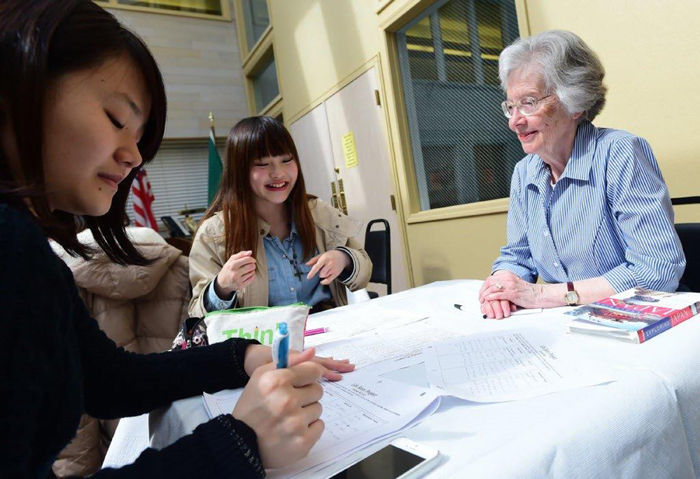Cross-generational integration
Incorporating people of various ages in a shared atmosphere is an alternative approach to both education and care for senior citizens.
October 29, 2015
Amazing things happen when you put preschoolers inside a nursing home. Since the release of a video of preschoolers playing with elderly men and women in an “intergenerational learning center,” the idea has gone viral.
As adorable as the video is, the topics addressed by filmmaker Evan Briggs are real and important issues of senior citizen care.
Additionally, the video presents a new approach to education which deserves to be taken seriously, an approach that combines the old and the new generations by integrating senior citizens into the education of children.
Though still a fairly new concept, examples of preschools and high schools alike practicing such methods are numerous across the U.S.
An article published by the Seattle Times explored this concept further by reaching out to a school in a suburb of Boston, which practices this concept of generational mixing in education. The architect who designed the school said they realized the facilities which high schoolers need were largely the same as those a population of senior citizens also requires. Gyms, pottery studios and playing fields are all shared by the high schoolers and senior citizens.
While there is no directly forced interaction of the seniors and the high schoolers, relationships develop anyway.
This type of concept has the potential – and so far has been proven – to have incredible results of solving problems held by both the educational system as well as those of caring for senior citizens.
Many times young people today are out of touch with older generations and the experiences that those generations hold. An infrastructure encouraging interactions with your grandparents – more than just visiting at Thanksgiving – can give students a much greater understanding and holistic education.
Additionally, Briggs brings to light some statistics that are largely overlooked. For example, “43 percent of older adults experience social isolation, which is closely correlated with loneliness and depression as well as mental and physical decline,” the video said. Furthermore, “the number of adults aged 65 years and older … is expected to double within the next 25 years.”
Concepts like the school addressed in the Seattle Times article are natural ways of combatting both of these problems in a practical and progressive way while changing very little structure of either institution.
An article published by Business Insider hails this type of educational setup as “a rejuvenating experience for the elderly and an enriching one for the youngsters.”
Business Insider cites additional benefits, including inter-generational facility being an incredible contribution to communality as well as cost benefits associated with building multi-use facilities.
While many approaches to education reform revolve around further standardization and federally implemented curricula, this concept is a unique take to how to improve many of the problems in education as well as addressing overlying social issues in a practical, serious manner.
Philip Grossenbacher is a sophomore studying english education from Lynwood. He can be contacted at 335-2290 or by [email protected]. The opinions expressed in this Column are not necessarily those of the staff of The Daily Evergreen or those of The Office of Student Media.

















